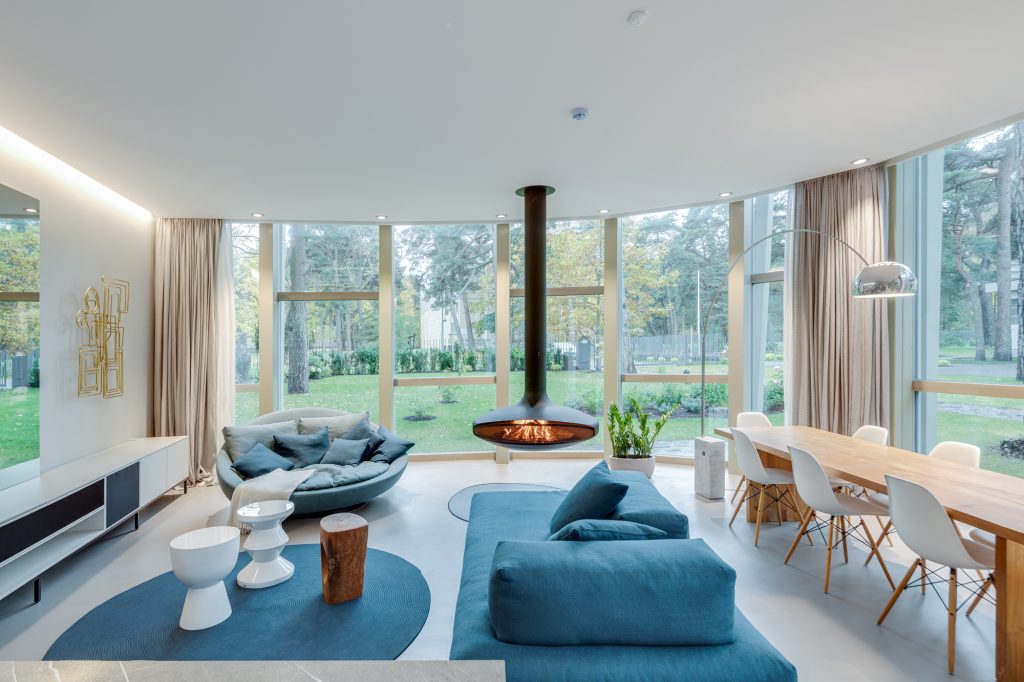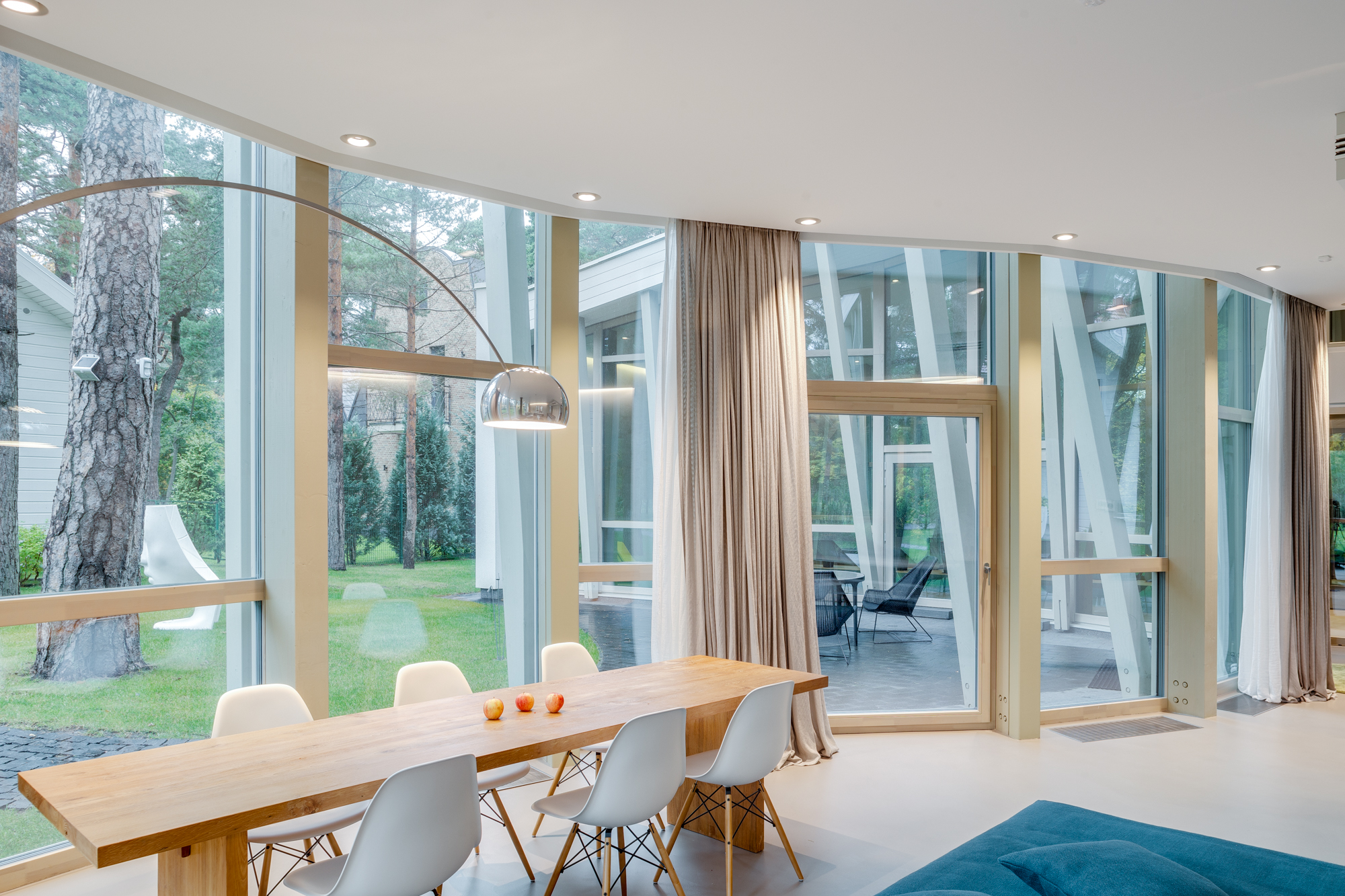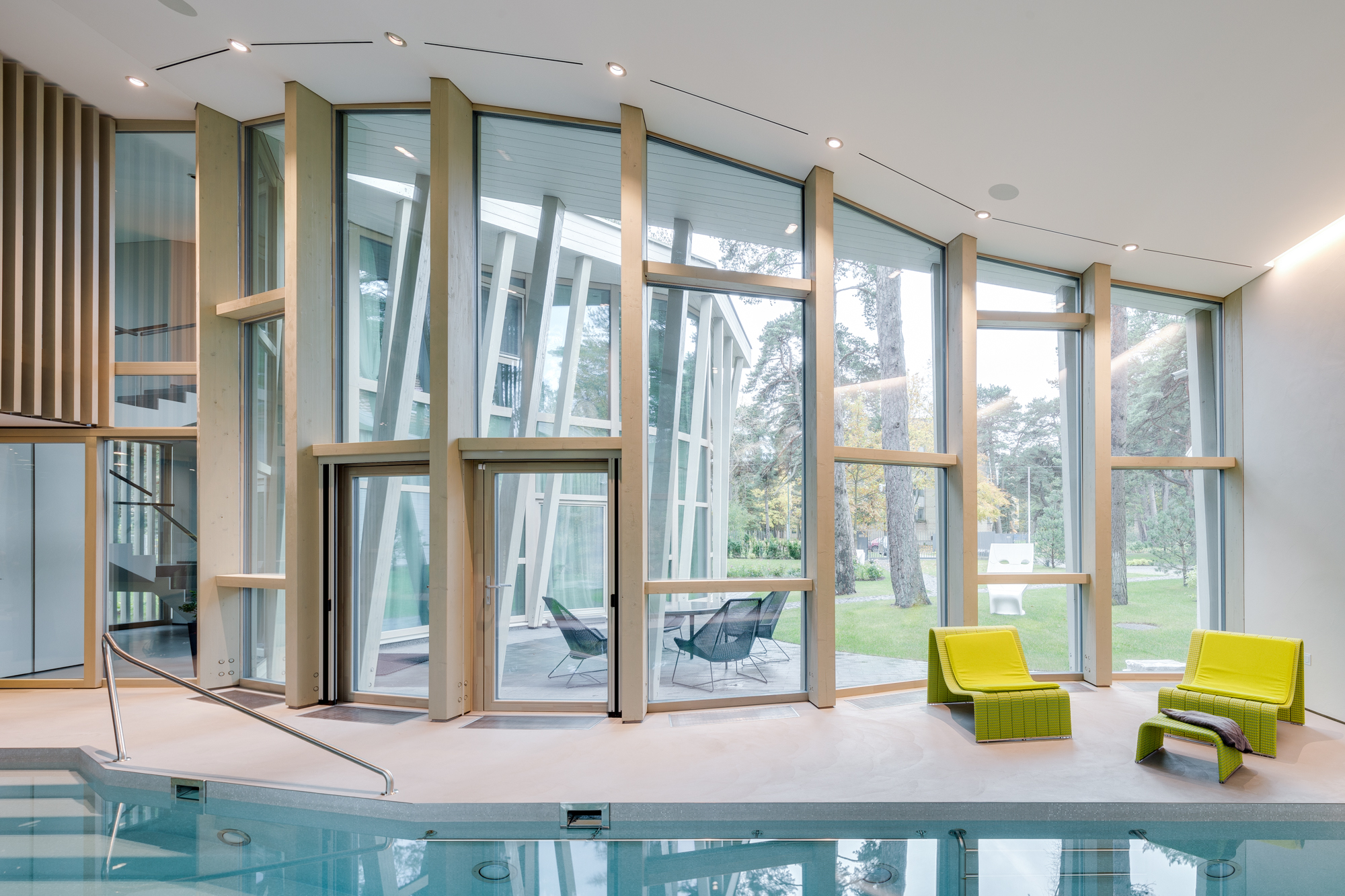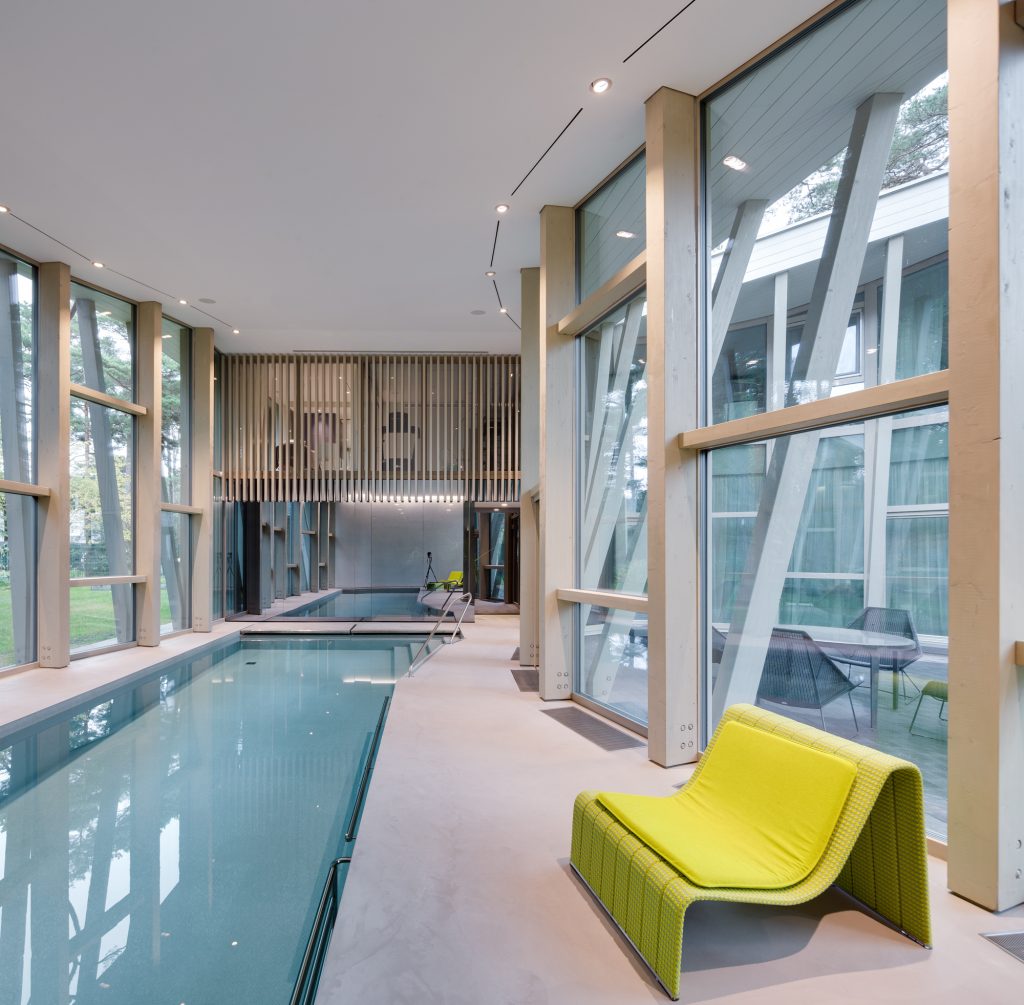The Interior of the Nest Villa
The Interior of the Nest Villa
The building designed in the historical Palanga pine forest is like an interpreted “family nest” that organically merges natural and domestic spaces, at the same time as if it connects the historical environment with the future. The tectonics of the building are formed by preserving valuable trees and ensuring a balance between openness and privacy: glass facades allow nature into the building, while the organic shape of the villa and openwork wooden structures – 87 different wooden columns, create oases of private spaces. The architecture of the villa’s constructions is a metaphor of the nest in the trees, it becomes visible and felt in the interior as well. The interior focuses on what is around – the openwork structure that forms the nest and the nature around the building which can be seen through it, therefore the interior design solutions are moderate and minimal. Seamless flooring, uniform materials for walls and floors, gray tones, glass railings, concealed doors in the walls, concealed TV in the mirror, etc. are used. The building is characterized by a “spatial flow” and a “rising” starting in the composition of the pool space, which seems to rise and develop organically into SPA, sports areas, the latter into the bedrooms and living areas. The idea of observing nature from inside is also developed by the solution of the levitating, rotating all-round fireplace. The surroundings of the villa are decorated with openwork metal compositions by the artist Marc Kalinka.
- Location
- Palanga
- Stage
- Realisation
- Category
- Residential
- Area
- 268m²
- Client
- Private
- Authors
- Edgaras Neniškis
- Rūsna Vaineikytė
- Rolandas Liola
- Arūnas Liola

SYNERGY – harmony with nature and renovated historic wooden villa (1938m).
PRESERVATION – nurturing and developing the old pine and wooden architecture traditions of the resorts.
IMAGE – “protective nest” (84 different geometries wooden columns used).
FUNCTION – vacation villa.
ASSOCIATIONS – sun (building transparency), nature (preserved pine forest), water (swimming pool), security (courtyard space), relaxation, openwork, openness to nature (architectural expression of the building).


Design
Through glass facade the interior directly observes and interacts with the surrounding pine forest
Heat-treated wood is used for the construction, decoration and interior of the building
The silhouette of the building adapts to the existing natural environment – the growing pines are preserved. Seaside waves and movement are sensed throughout the interior.

